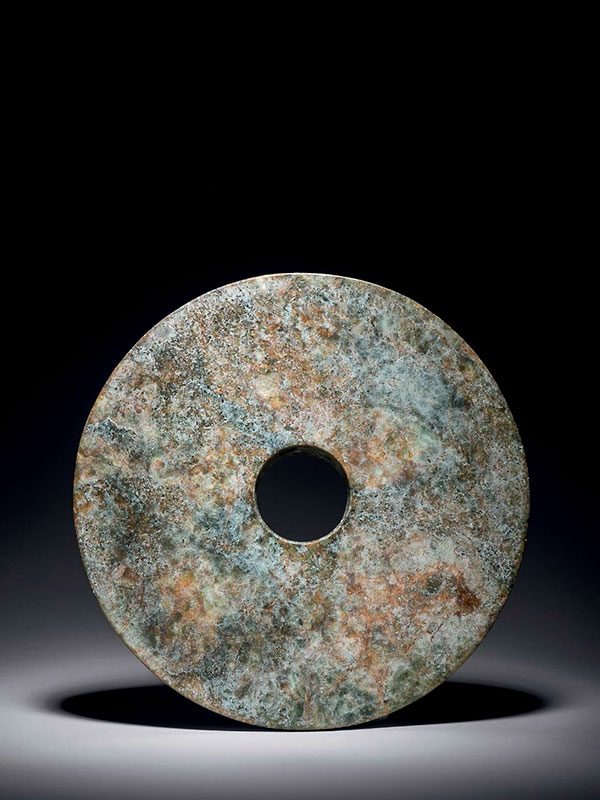Jade disc bi
A jade bi disc of uneven thickness. Its central, circular aperture is cut from both sides, leaving a ridge in the centre and visible grinding lines to either side of it. The stone is of predominantly celadon green tone with areas of reddish-brown inclusions all-over and a few dark grey speckles and white veining. Some calcified areas are visible. The disc is completely unadorned and its surface is well polished on both sides.
In China, a circular jade disc is known as bi. While the precise purpose of the bi disc is unclear, the large numbers found in some burial tombs suggest that they were a means for the deceased to show their wealth.1 An alternative theory is that they were used as talismans for the exorcism of and protection from evil. A jade bi-disc of similar size is in the collection of the National Palace Museum, Taipei.2 Another comparable jade bi-disc of similar texture and size is in the collection of the British Museum.3
- Rawson, J. Chinese Jade from the Neolithic to the Qing, London, The British Museum Press, 1995, p. 130
- A Catalogue of the National Palace Museum’s Special Exhibition of Circular Jade, Taipei, 1995, no. 48, pp. 88-9
- Rawson, J. op. cit. no. 4:6, p. 136

